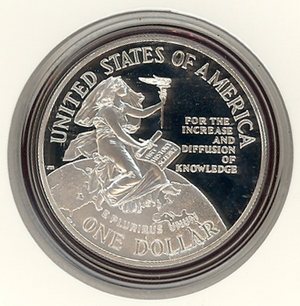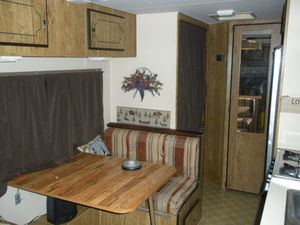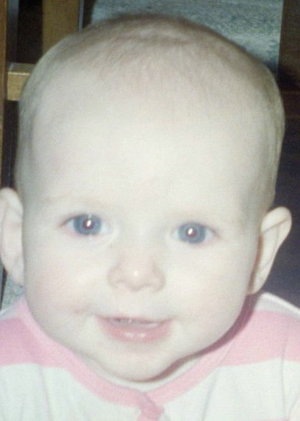In order to develop an appropriate theme unit for a class, you should first have a description of the class you’re teaching. This will help you to develop a plan that best meets their needs. Some of the information you should gather include class grade level, class size, age ranges of students, ethnicities and races of students, reading levels of students, grade levels in math, any behavioral concerns, and note other class dynamics such as whether or not they work well as a whole group, in cooperative groups and/or individually. You might also note types of activities the students prefer and work best for them, such as stories being read to them, hands on activities, art, computer related, etc.
Appropriateness for Age/Grade
A family thematic unit is appropriate for first grade students because at this age level, children are still somewhat egocentric; that is, they have a hard time seeing other’s perspectives. Their focus is primarily on themselves. A family unit will help students to see that not all people and families are the same and that being different is okay. Children at this age are also in a sub-stage called intuitive thought, according to Piaget. In this stage, children want to know the answers to all sorts of things. This unit can help provide answers to things that children are often curious about: themselves and their families and how their families are alike and different from others’ families. This thematic unit also supports social studies frameworks for first grade.
Rationale for the Unit
In the real-world, individuals interact with others and others’ families that are alike and different. Students need to know that not all people and families are alike and that part of what makes our families and us special is being unique. Students need to be exposed to various ways people and families are alike and different in order for them to gain an understanding and respect for others and others’ families. Developing an appreciation for one’s family and others’ families is important because it is the foundation of making and maintaining relationships. Without an understanding that it is okay to be different, students may not become accepting and tolerant individuals. Acceptance and tolerance are two very important factors in American society because they keep the peace and also help our nation grow. Introducing a basic understanding of these factors is important at a young age because teaching students to accept one another and get along with others will help students to grow into accepting and tolerant individuals. Furthermore, everyone is a part of a family. Yet, not all families are alike nor created equal. Students need to know what defines a family since all families are not alike. They also need to understand the family’s importance and their role within the family. In addition, students need to recognize some similarities between families, such as common rules and responsibilities, celebrations, shared goals, and growth and change that occur in families.
Unit Objectives
Major Concepts: family, similarities, differences, uniqueness, needs, chores, traditional, blended, extended, single-parent, diversity, habitat, home, time
Students will:
1. Learn that each student is a unique individual and valued person within a family.
2. Define family.
3. Learn that everyone belongs to a family.
4. Learn that not all families are alike.
5. Learn that families are alike in some ways and different in other ways.
6. Learn that families differ in size, make up, roles, rules, beliefs, and traditions.
7. Describe and compare families.
8. Appreciate their families and the families of others.
9. Learn the family’s importance within their own lives.
10. Work cooperatively in group tasks.
Link to Curriculum Standards
Social Studies
1. Explore and describe similarities and differences in the ways groups, societies, and cultures address similar human needs and concerns.
2. Demonstrate an understand that people in different times and places view the world differently.
3. Describe unique features of one’s nuclear and extended families.
4. Work independently and cooperatively to accomplish goals.
5. Examine the rights and responsibilities of the individual relation to his or her social group, such as family.
6. Students will exhibit knowledge of history identifying and describing major events, people, and trends. To achieve this standard, the learner will recognize that each family has a heritage.
7. Students will address historical events and trends in order to interpret historical information and put it in the context of past, present, and future. To achieve this standard, the learner will describe changes over time, such as family structure.
Math
1. Count with understanding and recognize “how many” in sets of objects.
2. Sort, classify, and order objects by size, number, and other properties.
3. Describe qualitative change, such as a student’s growing taller.
4. Use tools to measure.
5. Pose questions and gather data about themselves and their surroundings.
6. Sort and classify objects according to their attributes and organize data about the objects.
7. Represent data using concrete objects, pictures, and graphs.
8. Solve problems that arise in mathematics and in other contexts.
Science
1. Organisms have basic needs, which for animals are air, water, and food. Organisms can only survive in environments in which they can meet their needs. The world has many different environments, and distinct environments support the life of different types of organisms.
2. Resources include those things that we get from the living and nonliving environment to meet the needs and wants of the population. Some resources include basic materials such as air, water, and soil; some are produced from basic resources such as food, fuel, and building materials; and some resources are non material, such as quiet places, beauty, security, and safety.
3. Many characteristics of an organism are inherited from the parents of the organism, but other characteristics result from an individual’s interactions with the environment. Inherited characteristics include color of flowers and the number of limbs on an animal. Other features such as the ability to play a musical instrument, are learned through interactions with the environment.
Literacy
1. Write to acquire knowledge, promote lifelong communication, and gain confidence as a writer.
2. Write frequently for a variety of purposes.
3. Write to respond actively and imaginatively to literature.
4. Develop language through gross motor, sensory motor, and perceptual skills.
5. Develop and interest in literature, which includes multicultural, gender, and ethnic diversity in language use, patterns, and dialects.
6. Demonstrate knowledge of concepts of print, including print directionality.
7. Use comprehension strategies to enhance understanding, to relate ideas, to organize information, to make predictions, and to distinguish fact from fantasy during the reading process.
8. Read independently for pleasure and information.
Management
Organization of Subject Matter
The main focus of this unit lies within Social Studies because learning about family is the scope of first grade in the Social Studies Curriculum. Therefore, most of the lessons within the unit will heavily contain Social Studies content. Many of the lessons will contain literature and art. The reasoning behind this is because young children can often relate to situations presented in quality literature. Literature in this unit will serve to motivate students, clarify concepts, and represent concepts. Art will be used to help students express their understanding of these concepts. Science and Math should be integrated into a few lessons throughout the unit. The beginning of the unit should focus on defining family. Then, students should learn about the importance of families, who is included in families, growth and change of families, roles and responsibilities within families, family homes, and comparing families. The pre-test and post-test of the unit should be exactly the same. As a pre-test, the questions will be used to assess what students know and as a post-test, the questions will be used to assess what students have learned. You can use a KWL chart also to serve and an assessment tool.
Possible Materials
Children’s books about family (there are many wonderful books you can find at your local library)
Teacher resources such as websites, cd-roms, dvds, etc.
Access to computers, computer teaching station, and the Internet
Access to chalkboard and dry erase board
Various art and school supplies such as white paper, construction paper, scissors, glue, crayons, markers, pencils, yarn, hole punch, tape, magazines, graph paper, large chart paper, chalk, colored pencils, paper clips, rulers, etc.
Colonial family pictures and a United States map (see my colonial family lesson plan)
Various activity sheets related to family
Comments/Observation Checklists to use for assessment during lessons
Pre-written songs and poems about family
KWL chart, pre-test, post-test
Awards and stickers
Center materials
Letter to Parents about Unit (share with them what they will learn, items needed, etc.)
Homework sheets
Family photos
Time-line of Lessons (what you will actually teach each day) and actual lesson plans
Grade book to record students’ work
Posters and other bulletin board displays about the unit
Other
For your time-line, list the days/dates in a chart format. State the lessons that will be taught on each of the days along with the allotted time needed for each. Overall, the instruction should be presented to the whole group and activities will be completed individually within groups. However, some group discussion and collaborating will take place within certain lessons. Stories and sharing activities will take place within a circle pattern on the floor. All other activities will take place at students’ desks.
Possible Questions for Pre/Post-Test
1. What is a family?
2. Is everyone a part of a family?
3. Who belongs to a family?
4. How many people make up a family?
5. Do all people in a family live together?
6. Are all families the same? Explain.
7. How are all families the same?
8. How are families different?
9. Do families have rules? Can you give an example?
10. What responsibilities do family members have?
Center Ideas
Computers: Using drawing software on the computer, have students draw their own families, then word process a short paragraph about their families. These can be printed and placed in portfolios to demonstrate their technology capabilities.
Library: Provide a wide range of books about families for students to read during reading time, free time, or center time. Also provide books on tape, flannel board and flannel board stories, and other puzzles and games about families.
Math: Provide people cut outs and large graphs along with a question sheet for students to practice graphing skills. Also provide manipulatives for students to use for counting during various number operation lessons.
Science: Provide books and activity sheets about pets and animals families.
Sample Writing or Discussion Prompts
1. A family is . . .
2. A family provides . . .
3. I help my family by . . .
4. One family rule we have is . . .
5. One family tradition we have is . . .
6. A family shares . . .
7. My family is special because . . .
Bulletin Board Ideas
1. Family drawings completed by students
2. Family photos brought in by students (maybe even scrapbook pages)
3. Family trees completed by students with the help of their parents
4. Family time-lines completed by students
5. Home drawings completed by students
6. Posters of different types of families
7. Posters of animal families
8. Graph of family members’ heights
9. Posters of homes around the world
10. Poems and songs about families written on chart paper
National Council for Social Studies Standards, 2000
Tennessee Social Studies Framework, 2000
National Council of Teachers Mathematics Standards, 2000
Tennessee Science Curriculum Framework, 2000
Tennessee Language Arts Writing and Reading Framework, 2000








